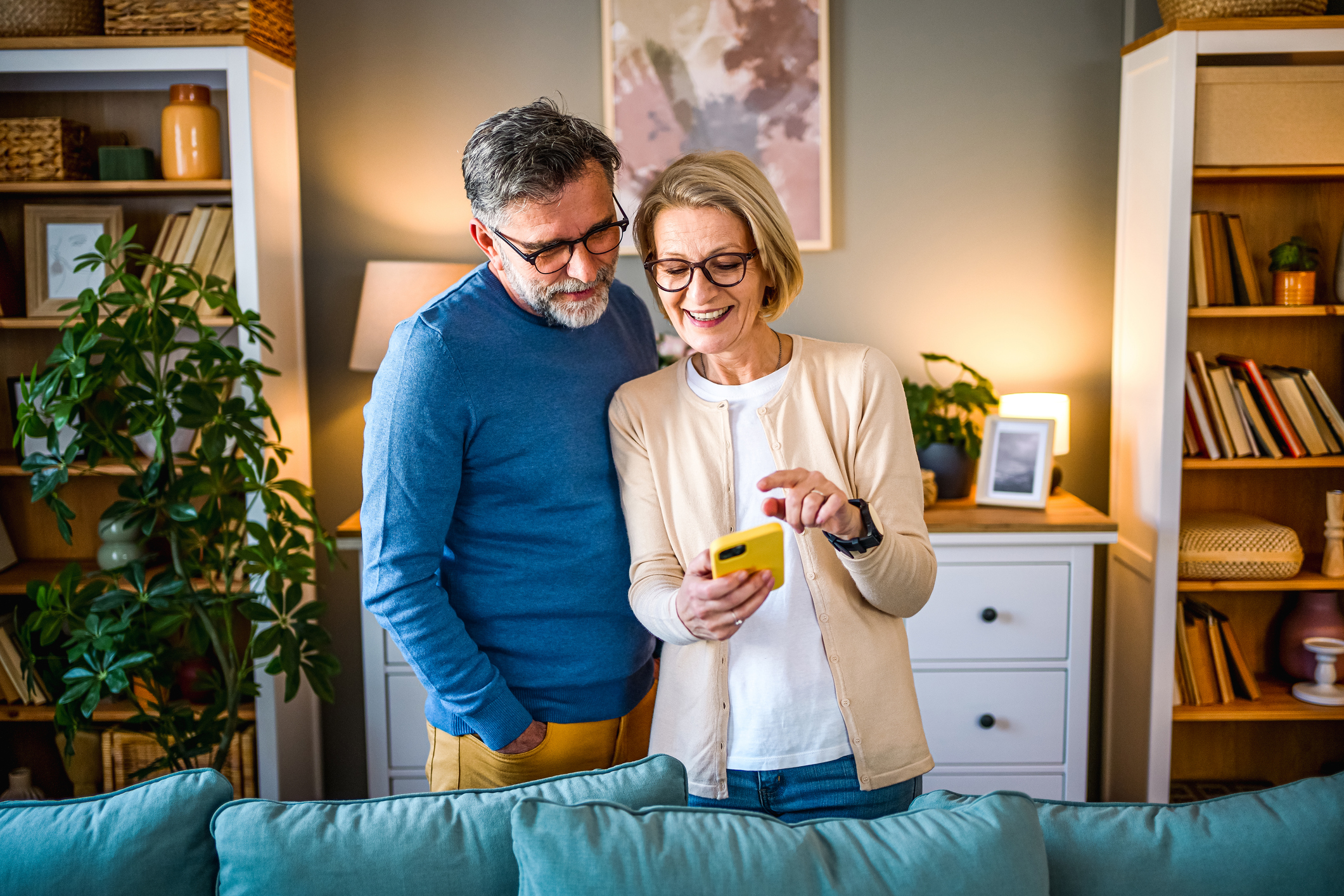When and Why You Might Consider a Strategic Roth Conversion
For two of my clients, the time was right for executing a Roth IRA conversion. Here’s why, and how they made the strategy work for them.


Over the past year, have you asked yourself, “How are we ever going to pay for the national debt that has been accumulated under the stewardship of both parties?” I know some of you were asking that question even before the pandemic. The federal government has been running annual deficits since 2002, with the additional red ink in 2020 tallying the total up to more than $3 trillion.
So, where do we go from here? The federal government’s remedies include higher taxes, lower expenses, or both. Those people on the right side of the political spectrum may say no higher taxes but cut spending, and those on the left will switch that around. So, if our elected representatives compromise, we are likely to have a mix of both.
Why a Roth? Because Taxes Are Low Until 2026
With higher taxes potentially coming down the road, it could be worth considering a strategic Roth conversion over the next few years. I will also remind you that the tax reform passed by Congress in 2017 reduced marginal tax brackets, but included a sunset clause that would revert brackets to 2017 levels in 2026 in the absence of action by Congress. If that happens, people now in the 12% bracket will revert back to the 15% bracket, and those in the 22% to the 25%, and so forth. Relative to history, we are in a low tax environment today. With the aforementioned deficits, a reversion to tax averages MIGHT be in the cards.
From just $107.88 $24.99 for Kiplinger Personal Finance
Become a smarter, better informed investor. Subscribe from just $107.88 $24.99, plus get up to 4 Special Issues

Sign up for Kiplinger’s Free Newsletters
Profit and prosper with the best of expert advice on investing, taxes, retirement, personal finance and more - straight to your e-mail.
Profit and prosper with the best of expert advice - straight to your e-mail.
So, consider a Roth IRA. The contributions/conversions into a Roth go in after tax, and grow tax-free forever. If an investor structures a strategic Roth conversion plan, they move (convert) dollars from a pretax plan (i.e., traditional IRA, pretax 401(k), etc.). This conversion triggers a taxable event. If you convert $50,000 from a traditional IRA to a Roth, you add $50,000 of income to your tax return that year. Many people understandably recoil at this because of the tax bill. It is undoubtedly short-term tax burden, but that must be weighed against the long-term tax gain of having the Roth dollars grow tax-free.
How My Client Pulled Off His Roth Conversion Coup
Case and point, some years back, a client of mine retired at age 64. He was concerned by all of his pretax investments, for which he would need to begin taking distributions from to satisfy IRA required minimum distributions (RMDs) at age 70 (since changed to age 72). He knew that with RMDs, he would likely be in a higher tax bracket for the rest of his life.
So, he carefully planned how much “room” he had in his current tax bracket — before bumping up into the next higher bracket — and “filled” it with a Roth conversion. He converted $50,000 yearly for four years and recognized the need to pay that tax bill with savings as opposed to having taxes withheld from the converted amount. He faced a substantial tax bill but now has a substantial tax-free Roth account that has absolutely no RMDs. And since his pretax portfolio is $200,000 less due to the conversions, his future RMDs will also be less.
Clearly, the foundation for this concept rests with a projection of your future retirement income and a guess at where taxes are headed. If you are facing a higher tax bracket years down the road due to RMDs, a strategic Roth conversion may make sense. If you don’t foresee your income going UP in retirement, but you believe taxes are going up for individuals, then the Roth conversion concept might be compelling. Conversely, this may be less compelling for those who expect to be in a lower tax bracket in the future or if they expect taxes to decrease in the future.
Another Client Capitalized on a Market Downturn
Another timely example took place in March 2020. A client of mine recognized that his traditional IRA was severely depressed as the pandemic took hold. He wisely converted a chunk of that IRA to his Roth. This was because stocks were depressed, and he converted more shares for the same dollar amount he desired to convert. When the market recovered, those shares he converted to the Roth rose along with the market.
A few key things to remember for converted dollars to a Roth: Generally, the dollars converted to a Roth must stay in the Roth for five years to avoid penalties and taxes. In addition, if you do conversions at or beyond age 72, the RMD must come out before the conversion, nor are RMDs eligible for Roth conversions.
This may all seem disturbingly complex, which it certainly is. Think through all concepts, and consider seeking advice from a professional to corroborate your plan.
Profit and prosper with the best of Kiplinger's advice on investing, taxes, retirement, personal finance and much more. Delivered daily. Enter your email in the box and click Sign Me Up.

Jamie Letcher is a Financial Adviser with LPL Financial, located at Summit Credit Union in Madison, Wis. Summit Credit Union is a $5 billion CU serving 176,000 members. Letcher helps members work toward achieving their financial goals and through a process that begins with a “get-to-know-you” meeting and ends with a collaborative plan, complete with action steps. He is a member of FINRA/SIPC, a registered broker-dealer and investment adviser.
-
 Holiday Tax Scams: 'Tis the Season to be Wary
Holiday Tax Scams: 'Tis the Season to be WaryTax Scams Navigating tax tricks of the holiday season may be daunting, but don't let that destroy your festive spirit
-
 Metro by T-Mobile Is Giving Away This Samsung Galaxy A16: Which Plans Are Eligible?
Metro by T-Mobile Is Giving Away This Samsung Galaxy A16: Which Plans Are Eligible?Metro by T-Mobile is offering free Samsung Galaxy A16 phones on eligible plans right now. Here’s how the deal works.
-
 I Drive and Collect Classic Cars: Here’s How I Got Started
I Drive and Collect Classic Cars: Here’s How I Got StartedAre classic cars a hobby or an investment strategy — or both? Either way, the vintage car scene is much cooler and more affordable than you think.
-
 The $183,000 RMD Shock: Why Roth Conversions in Your 70s Can Be Risky
The $183,000 RMD Shock: Why Roth Conversions in Your 70s Can Be RiskyConverting retirement funds to a Roth is a smart strategy for many, but the older you are, the less time you have to recover the tax bite from the conversion.
-
 A Financial Pro Breaks Retirement Planning Into 5 Manageable Pieces
A Financial Pro Breaks Retirement Planning Into 5 Manageable PiecesThis retirement plan focuses on five key areas — income generation, tax management, asset withdrawals, planning for big expenses and health care, and legacy.
-
 4 Financial To-Dos to Finish 2025 Strong and Start 2026 on Solid Ground
4 Financial To-Dos to Finish 2025 Strong and Start 2026 on Solid GroundDon't overlook these important year-end check-ins. Missed opportunities and avoidable mistakes could end up costing you if you're not paying attention.
-
 Are You Putting Yourself Last? The Cost Could Be Your Retirement Security
Are You Putting Yourself Last? The Cost Could Be Your Retirement SecurityIf you're part of the sandwich generation, it's critical that you don't let the needs of your aging parents come at the expense of your future.
-
 I'm an Insurance Pro: It's Time to Prepare for Natural Disasters Like They Could Happen to You
I'm an Insurance Pro: It's Time to Prepare for Natural Disasters Like They Could Happen to YouYou can no longer have the mindset that "that won't happen here." Because it absolutely could. As we head into 2026, consider making a disaster plan.
-
 The Future of Philanthropy Is Female: How Women Will Lead a New Era in Charitable Giving
The Future of Philanthropy Is Female: How Women Will Lead a New Era in Charitable GivingWomen will soon be in charge of trillions in charitable capital, through divorce, inheritance and their own investments. Here's how to use your share for good.
-
 5 Smart Things to Do With Your Year-End Bonus, From a Financial Professional
5 Smart Things to Do With Your Year-End Bonus, From a Financial ProfessionalAfter you indulge your urge to splurge on a treat, consider doing adult things with the extra cash, like paying down debt, but also setting up a "fun fund."
-
 Are You a Gen X Investor? Here's How You Can Protect Your Portfolio From an AI Bubble
Are You a Gen X Investor? Here's How You Can Protect Your Portfolio From an AI BubbleAmid talk of an AI bubble, what's the best course of action for investors in their 50s and 60s, whose retirement savings are at risk from major market declines?